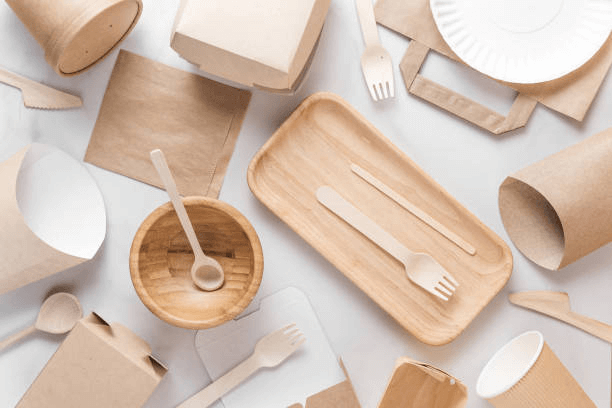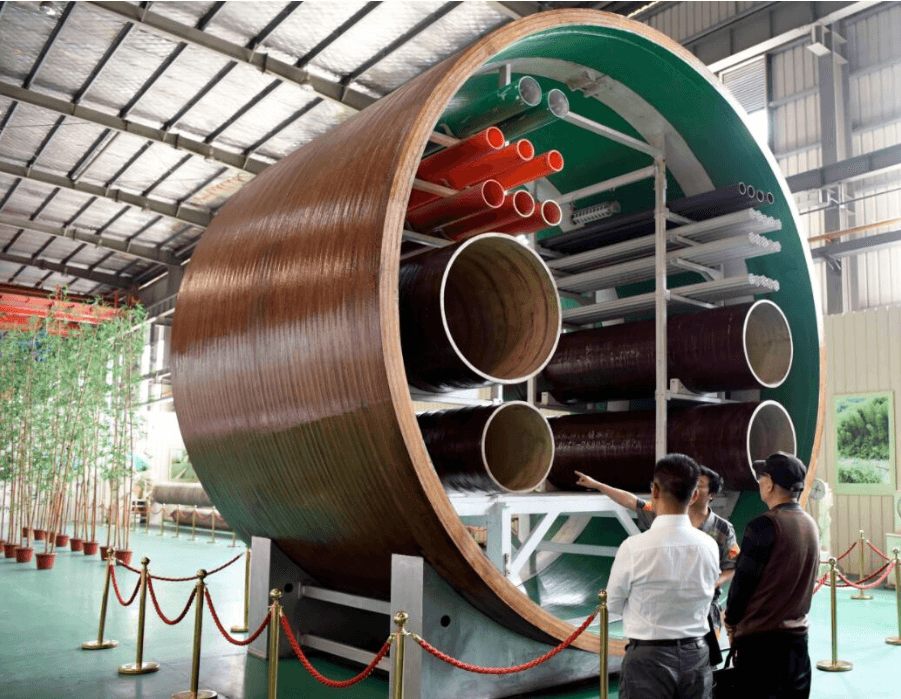As global environmental issues caused by plastic pollution become increasingly severe, reducing plastic usage and seeking green and sustainable alternatives have become an international consensus. Bamboo, as a green, renewable, and biodegradable biomass material, is an excellent choice for a natural and sustainable substitute for plastic. In recent years, especially since 2022, a series of significant events both domestically and internationally have elevated the concept of “Bamboo Substituting Plastic” to unprecedented heights, bringing new opportunities for global green development. It has been included in the outcomes list of the “Global Development High-Level Dialogue” and has become one of China’s important actions to implement the United Nations’ 2030 Agenda. So, in what aspects can bamboo replace plastic? What is the current status of product and technological research and development in this field? What is the international trade potential of “Bamboo Substituting Plastic” products? How should “Bamboo Substituting Plastic” develop in the face of historical opportunities?

China has abundant and widely distributed bamboo resources, and the bamboo industry has rapidly developed with a wide variety of products. The processing and utilization level of bamboo products and international trade are both leading in the world. It is projected that the total output value of China’s bamboo industry will exceed 700 billion yuan by 2025 and surpass 1 trillion yuan by 2035. Bamboo grows rapidly, matures quickly, has excellent properties, and possesses strong ecological functions. It is a good alternative material to wood, plastic, steel, and cement. It is widely used in many fields such as building decoration, transportation, daily necessities, water conservancy and hydropower, electronics, and electrical appliances. It plays a positive role in promoting environmental protection and economic development.

Global environmental and resource issues are becoming increasingly prominent, and green, low-carbon, and circular economy have become the main theme of global sustainable development. Due to the growing concerns over plastic waste generation and disposal, finding environmentally friendly alternatives to plastic products, reducing plastic pollution, and promoting sustainable development have become a global consensus and inevitable choice.
In November 2022, the Chinese government, together with the International Bamboo and Rattan Organization, launched the initiative of “Bamboo Substituting Plastic” to implement the global development initiative. Currently, “Bamboo Substituting Plastic” is still in its early stages, serving as an important connotation of the bamboo industry and a strong leverage and new driving force for its future healthy development. Effectively implementing the “Bamboo Substituting Plastic” initiative will help promote the healthy development of the bamboo industry, reduce plastic pollution, address climate change, and accelerate the implementation of the United Nations’ 2030 Agenda for Sustainable Development.

The current global situation regarding plastic pollution is severe, and governments and various sectors of society are actively exploring and implementing policies to restrict and ban plastic usage in order to mitigate the adverse impact of plastic pollution on the environment and ecosystems. Bamboo, as a green, renewable, and biodegradable biomass material, is an excellent choice for a natural and sustainable substitute for plastic. By implementing the “Bamboo Substituting Plastic” initiative in a comprehensive manner, it can provide macro-level guidance and direction, promote the research, development, promotion, and application of bamboo-based plastic alternatives, and effectively address environmental issues caused by plastic pollution. This initiative can also provide new impetus for advancing global sustainable development.
1, Harmful Effects of Plastic
Plastic is widely used in various aspects of human production and daily life due to its low cost, ease of processing, and good performance. In 2020, the global plastic production reached 367 million tons, and it is projected to reach 1.124 billion tons by 2050. Due to the continuous increase in global plastic production and improper disposal, a large amount of plastic waste has been generated, causing severe ecological and environmental problems such as pollution in cities, clogging of rivers, and threats to wildlife and their habitats. Solving the issue of plastic pollution is becoming increasingly urgent. According to statistics, China generated 63 million tons of plastic waste in 2019, and it is estimated that global plastic waste will reach 12 billion tons by 2050. The massive amount of plastic waste has led to severe white pollution and the hazards of microplastics, which will cause permanent and irreversible damage to the ecological environment on which humans depend for survival and the global ecosystem.

2, Global Plastic Restriction and Ban Policies
In response to the serious issue of plastic pollution, particularly the environmental pollution caused by single-use non-degradable plastics, countries worldwide have actively implemented corresponding measures to restrict and ban plastic usage. More than 20 years ago, countries such as Ireland and Italy implemented plastic restrictions. China introduced the “Plastic Restriction Order” in 2008, but its scope and impact were limited. In January 2020, China issued the “Opinions on Further Strengthening Plastic Pollution Control,” which provided a clear plan to upgrade the plastic restriction order to a plastic ban. In March 2022, the Fifth United Nations Environment Assembly approved and signed the “Resolution to End Plastic Pollution (Draft),” marking the arrival of the first global plastic restriction order.
3, The Important Value of “Bamboo Substituting Plastic”
The plastic products industry is facing an urgent need for low-carbon and environmentally friendly transformation, and the rational substitution of green materials has become the inevitable path for its future development. Since June 2022, China has repeatedly put forward the initiative and suggestions of “Bamboo Substituting Plastic” at important domestic and international conferences such as the BRICS Summit, WTO meetings, World Bamboo and Rattan Congress, and the National People’s Congress and Chinese People’s Political Consultative Conference.

Bamboo is a distinctive forest resource in China, with unique advantages in terms of resources, material properties, technology, and culture. Effectively implementing the “Bamboo Substituting Plastic” initiative and developing innovative technologies and products in this field can meet the urgent global demand for reducing, restricting, and banning plastic usage. It is one of the sustainable solutions based on nature to mitigate plastic pollution and holds significant ecological, economic, social, and cultural value.

4, Fields of Application for “Bamboo Substituting Plastic”
Bamboo has excellent comprehensive performance, and there is a wide variety of bamboo products with extensive applications, encompassing over a hundred series and tens of thousands of product types. With its excellent properties, natural texture, and diverse forms, bamboo provides various possibilities and choices for the development of bamboo-based plastic substitute products. It can be applied to small items like buttons, utensils, and packaging, as well as larger-scale applications such as housing construction, pipe corridors, automobiles, and high-speed railways. The application of bamboo covers a wide range of categories, including disposable products, daily necessities, construction and transportation, and engineering facilities.
- A ,Disposable Products
Disposable plastic products mainly include disposable tableware (straws, knives, forks, spoons, food containers, etc.), disposable packaging materials, disposable medical supplies, disposable hotel supplies, etc. These are the primary targets of the global “plastic restriction and ban” measures.

- B, Daily Necessities
Bamboo’s beautiful texture, uniform color, and comfortable touch have enabled the large-scale production of bamboo-based electronic daily necessities such as bamboo keyboards, mice, speakers, calculators, buttons, etc. These products are mainly sold to the European and American markets. In addition, bamboo daily necessities such as bamboo cutting boards, bamboo cups, bamboo toothbrushes, tea sets, stationery, etc., have occupied a certain market share in the plastic substitute products market due to their low cost, attractive design, and environmental friendliness.

- C, Construction
Bamboo-based panel materials, mainly made from bamboo strand fibers, have achieved large-scale industrial production. They can be used in outdoor decks, wall panels, partitions, flooring, railings, and other construction applications. Currently, the available products are mainly thick panels, which limits their application range. However, the development of lightweight, thin, and functional bamboo strand panels has significant market potential in the fields of architectural decoration, transportation, and household appliances.

- D, Transportation
There has been extensive research and application of bamboo-based substitutes for plastic in automobile interiors. Bamboo has been successfully applied to various parts of cars, including the bottom, front, noise reduction components, bumper beams, dashboards, and doors of Audi, Mercedes-Benz, BMW, and other vehicles.
- E, Engineering Facilities:
Bamboo-wrapped composite pipes are a new type of bio-based composite pipes that are processed using a multi-layer structure and a circumferential-longitudinal layering winding process, fully leveraging the advantage of bamboo’s high tensile strength along the longitudinal fibers. Compared to plastic pipes, bamboo-wrapped composite pipes have lower transportation costs, good insulation performance, strong deformation resistance, environmental friendliness, and long service life. Moreover, their comprehensive cost is only 60% to 70% of plastic pipes. They can replace large-diameter plastic pipes and are widely used in water conservancy, construction, transportation, communication, and military engineering projects. Bamboo-wrapped composite pipes, bamboo-wrapped pipe galleries, and bamboo-wrapped integrated houses have entered the stage of promotion and industrialization.

- F, Future Research and Application Areas for New Products
Based on the characteristics of bamboo and the commonalities and application scope of existing bamboo and plastic products, bamboo-based substitute products can be categorized into handle types, bracket types, shell types, cushion types, pipe types, and disposable product types. They can be applied in various fields such as electronics, transportation, daily necessities, sports and fitness, medical and health care, military, agriculture and forestry, architectural decoration, and children’s products. The development of corresponding products and their research technologies will be a key focus. Additionally, besides the mentioned products, further exploration and utilization of bamboo’s characteristics and advantages should continue. This includes the continuous development of new technologies, the creation of new equipment, the diversification of product types, and the active expansion of the application areas for bamboo-based substitute technologies and products.

“Substituting Bamboo for Plastic” represents a new opportunity to drive global green development and provides a nature-based solution for sustainable development worldwide. It will have a profound impact on industry demand, industrial technology, economic development, human health, social services, and cultural exchange. It possesses immense market capacity and application potential. By harnessing the potential and industrial advantages of bamboo resources and leveraging technological innovation, we can continuously improve the quality and technological level of bamboo-based substitute products, expand their application scope and market demand, strengthen international cooperation and brand promotion, and achieve the sustainable development of the bamboo-based substitute industry. This will contribute to addressing global climate change and leading global green and sustainable development.
Reference
How ANOS® Bamboo Decking Surpasses Other Strand Woven Bamboo?
How To Judge The Quality Of Bamboo Decking
How to Correctly Choose Bamboo Products in Different Climates?


One Response
You’ve written something that not only informs, but also inspires a sense of wonder and possibility.